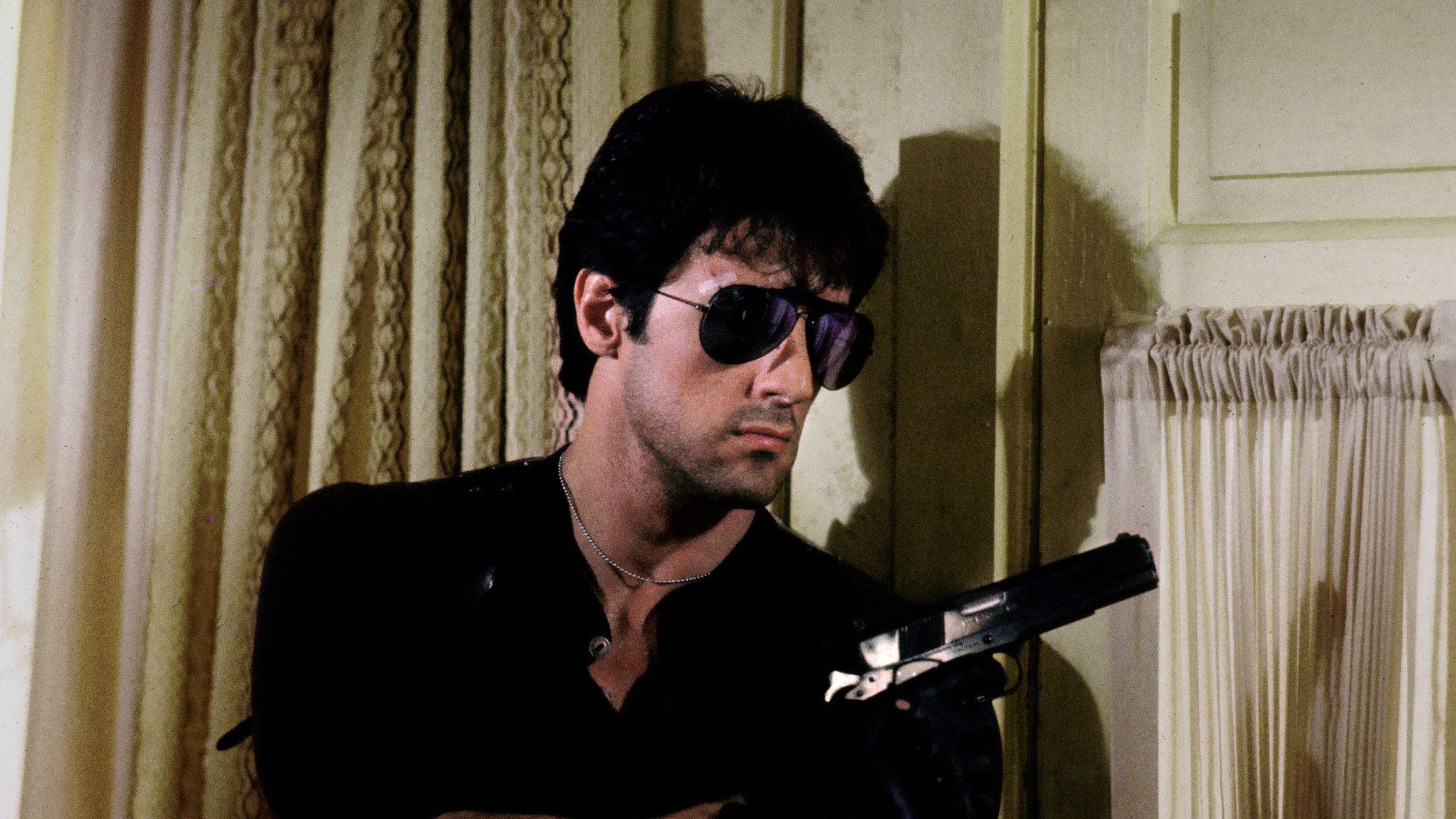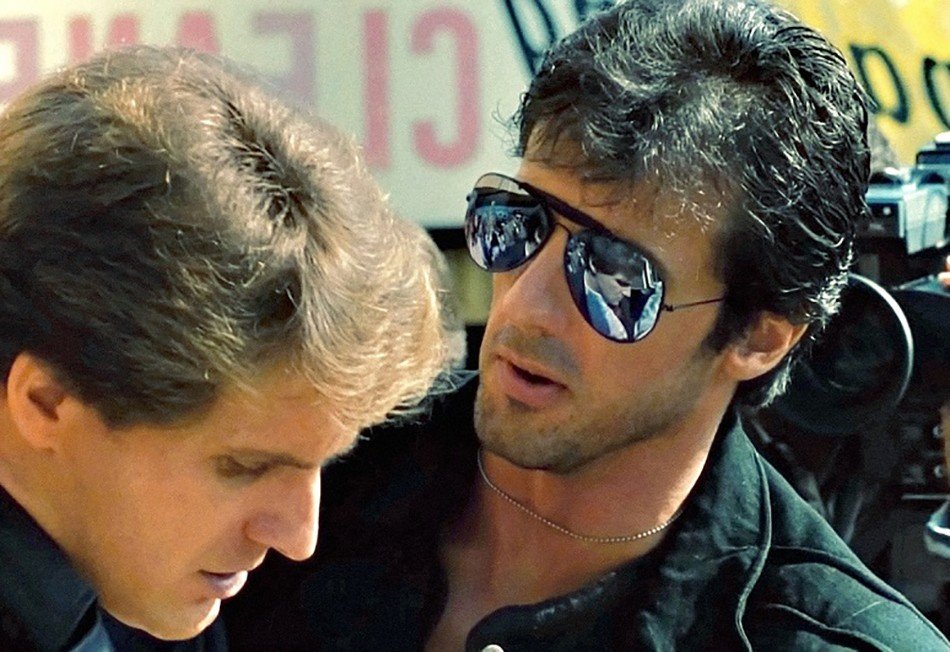Cobra: Celebrating the Secret Masterpiece of '80s Action Cinema
The 1980s delivered some of the greatest action films of all time and it delivered them rapidly. By 1986, buying a ticket to watch a loose cannon cop recklessly chase down a serial killer was common practice. With so many action films being released in a short amount of time, it was easy for some to fall through the cracks of our cultural conscience. One such film, unfairly maligned, often left out of discussions of ‘80s action cinema is George P. Cosmastos’s 1986 film, Cobra, starring the one and only Sly Stallone. Allow me to make the argument for celebrating this secret masterpiece of ‘80s action cinema.
Cobra follows Sylvester Stallone as Lieutenant Marion “Cobra” Cobretti on his hunt for a serial killer terrorizing Los Angeles, known as “The Night Slasher.” Unbeknownst to Cobretti and the entire LAPD, the killings are the work of a fascist cult, “The New World.” As Cobra unravels the mystery (kinda just by being there), the actions of the cult become increasingly violent and unpredictable until it all boils over. The film had a huge opening, making back well over its $25 million dollar budget, but was not well received by critics. To many, this was just another run of the mill action film with a dumb protagonist and an even dumber plot. While the film has gone on to garner a cult following, it is still often left out of discussions of ‘80s films, action cinema, and Stallone’s filmography. But Cobra is a unique action film that has much more to give than what’s apparent from the surface.
For starters, the film absolutely nails its setting and atmosphere. The scenery is so drenched in neon that it oozes out from hidden LA pleasure dens and into the safety of the daylight. The steel of The New World’s axes glint in the light, shimmering like a beacon of doom. Cobra’s mirrored aviator sunglasses reflect the heavens and make the bad guys search their inner humanity before being turned to dust by the righteous hand of Marion Cobretti; a man who loves to cut pizza with scissors and keep his gun oil in an egg carton inside the fridge. Every location tells a story and brings us deeper into the nightmare version of LA that Cobra inhabits. Nowhere is safe and it seems the only people aware of the danger are Cobretti and The New World. The public moves through the dimly lit shopping centers, the seedy motels, and the industrial parking garages with little regard for their surroundings. Opposed to traditional action films, Cobra is lit like the slasher films of its time. It uses shadows to hide violent psychopaths and light to reveal their dangerous intentions. The camera creeps along with the characters, often switching POVs from scene to scene and even within scenes. In the world that the film creates, it would be conceivable for Cobra to take care of the cult, cut up some pizza, and head to Crystal Lake to fistfight Jason Voorhees.
The other thing that makes Cobra work so well is Sylvester Stallone’s performance. He takes command of the screen before we’re even introduced to him. The film begins with a man taking hostages in a supermarket and the only logical response for the LAPD is “Call the Cobra.” He bursts onto the scene in a 1950 Mercury Coupe with a license plate that reads “AWSOM 50.” He’s wearing those mirrored aviators, his jaw is chiseled out of marble and he already knows what to do. It’s somehow confusing and incredibly badass, a feat that only a great like Stallone could achieve. He quickly takes command of the situation inside the grocery store, dodging shotgun blasts, putting civilians in harm's way, and disarming the mad gunman with middle school level wit. Before dispatching the supermarket terror, Cobretti hits him with the film’s most infamous line “You’re a disease, and I’m a cure.” If Cobra is the cure for the disease of crime, he’s not a time-release capsule or a space age laser. Not anywhere close; he’s a doctor from the dark ages making you bite down on a hunk of wood while sawing off your ears to relieve congestion. Once he’s done he’ll ask why you're crying and insist you eat an apple, or as he would refer to it, “health food.” Watching Stallone go toe to toe with ax-wielding maniacs is captivating and becomes tense because of how suddenly we realize that they are one and the same. Their faceoffs are captivating on a subtextual level, but they're also incredibly fun to watch.
About halfway through the film, there is an extended car chase where Stallone bursts through traffic like a bat out of hell to rescue Ingrid, played by Sly’s real-life wife of the time, Brigitte Nielsen. We follow the couple as trucks explode on the highway, Cobra drives on the sidewalk (this guy hates civilians), cars fall apart, windows shatter from barrages of bullets, and finally, Cobra hits the nitrous boost to outrun the crooks and save his car… and Ingrid. Ingrid was definitely a top 3 priority. Later in the film, Ingrid and Cobretti are hiding out in a motel away from the city and a small army descends upon them. There are explosions from nowhere, gunshots from everywhere, and armed men running all over the place. This firefight eventually leads to a foundry—because of course it does—where Cobra sets multiple people on fire, lurks around in the shadows like a coked-up Batman, and kills every extra from Sons of Anarchy. It’s exciting, funny, and chaotic.
But there's more to observe than just the explosions. The iconic matchstick perched on Cobra’s lips, the Cobra logo, emblazoned on his car and apparel, represent power, stealth, and the lethal force of Marion Cobretti. These images not only reinforce Cobra's identity but also further place us in the universe that he inhabits. No one is curious why Cobra is the way that he is—it just makes sense. He’s the Cobra, it’s who he is and what he does. The fashion choices, characterized by Stallone's leather and denim outfits, along with the mirrored aviators, encapsulate the larger-than-life persona of Cobra. These stylized elements capture the essence of the era. The soundtrack infuses the film with an electrifying energy, complementing the on-screen action. The synthesizer-filled tracks and pulsating beats heighten the suspense and adrenaline, creating an unforgettable experience. An incredible montage set to Angel of The City by Robert Tepper takes us all around LA and even features David Rasche (Succession hive stand up), while Cobra harrasses everyone who’s ever existed. By skillfully employing visual motifs, embracing ‘80s fashion and music, and utilizing cinematography to create a distinct aesthetic, Cobra cements itself as a true embodiment of the era. Its visuals transport you to a time when action films reigned supreme, capturing the essence of ‘80s culture and standing as an enduring testament to the era's cinematic legacy.
Cobra is a film that shouldn’t work. To be fair, it didn’t work and hasn’t worked for a lot of people. But when we go into a film like this, seeing Sylvester Stallone wearing leather and denim, being called “Cobra” for an hour and a half, what else can you expect?. During the 1980s, the industry became oversaturated with films like this. But in Cobra, Stallone created what is essentially a slasher film married with Commando or a later Dirty Harry sequel. There does exist a storied X-rated cut of this film which embraces the slasher aspect of the story to greater effect, even going as far as showing Cobra committing acts of violence on The New World that are on par with their own. However, what we currently have should be evaluated as is, and as it stands, Cobra remains an absolute masterpiece of ‘80s action cinema. We have amazing uses of montage, full display of the fears of middle america that Ronald Reagan feasted on (there’s literally a huge poster of Reagan in Cobra’s office), Gary Wright on the soundtrack, neon, real-life sets, and a complete lack of regard for civilian casualties. Cobra's enduring appeal lies in its audacious blend of the slasher and vigilante genres, its atmospheric setting, and Sylvester Stallone's indomitable presence. It's well-deserving of a place in the pantheon of cult classics.





Hey, I'm Jarett! I'm a writer and film scholar in Denver, CO, where I've founded Overthinking Media, a place where we share film through screenings, video essays, and more! You can find us on instagram at over.thinkingmedia or on Patreon by searching overthinkingmedia!